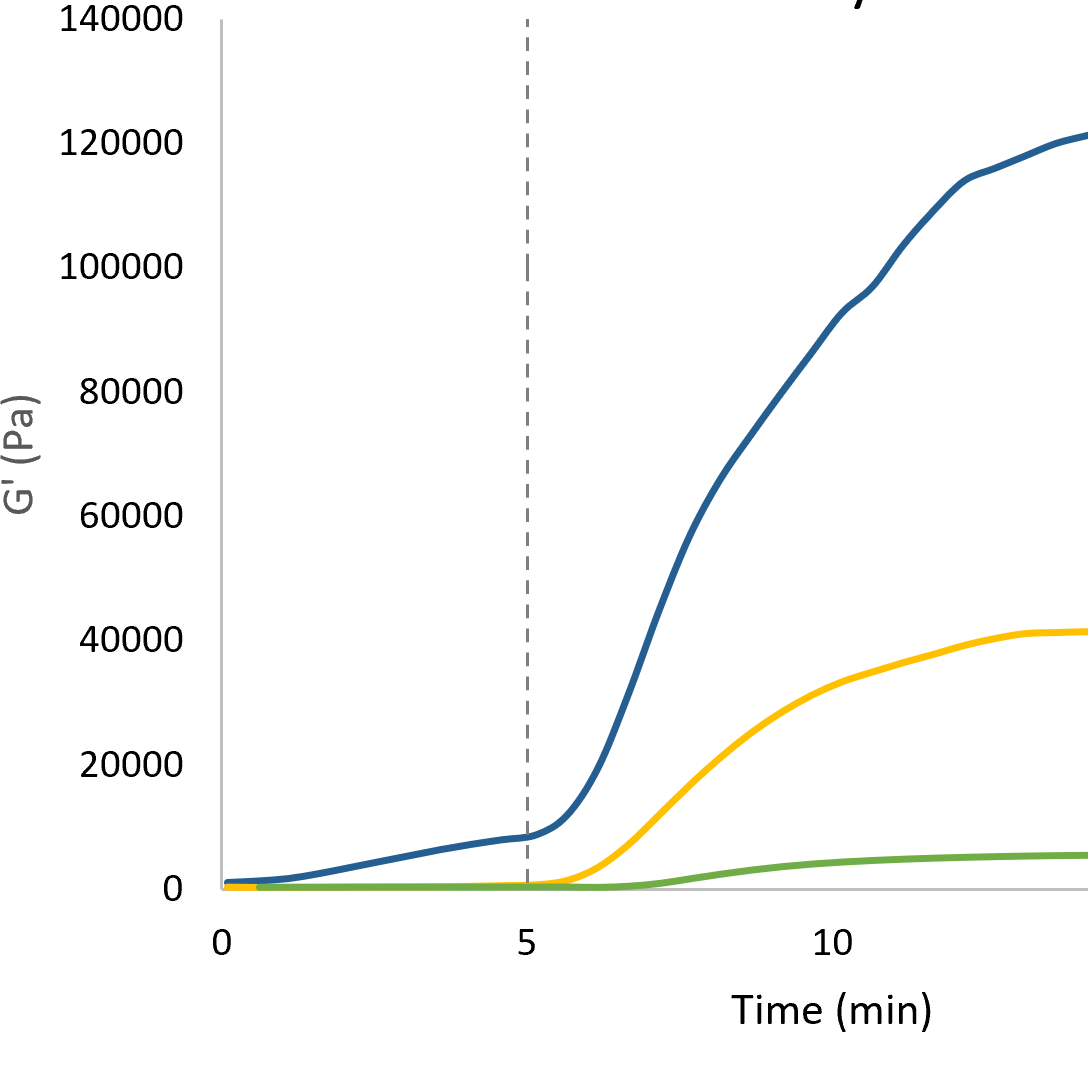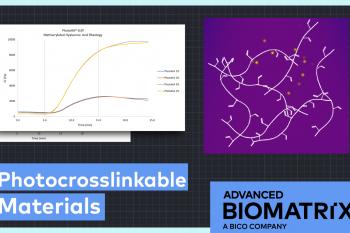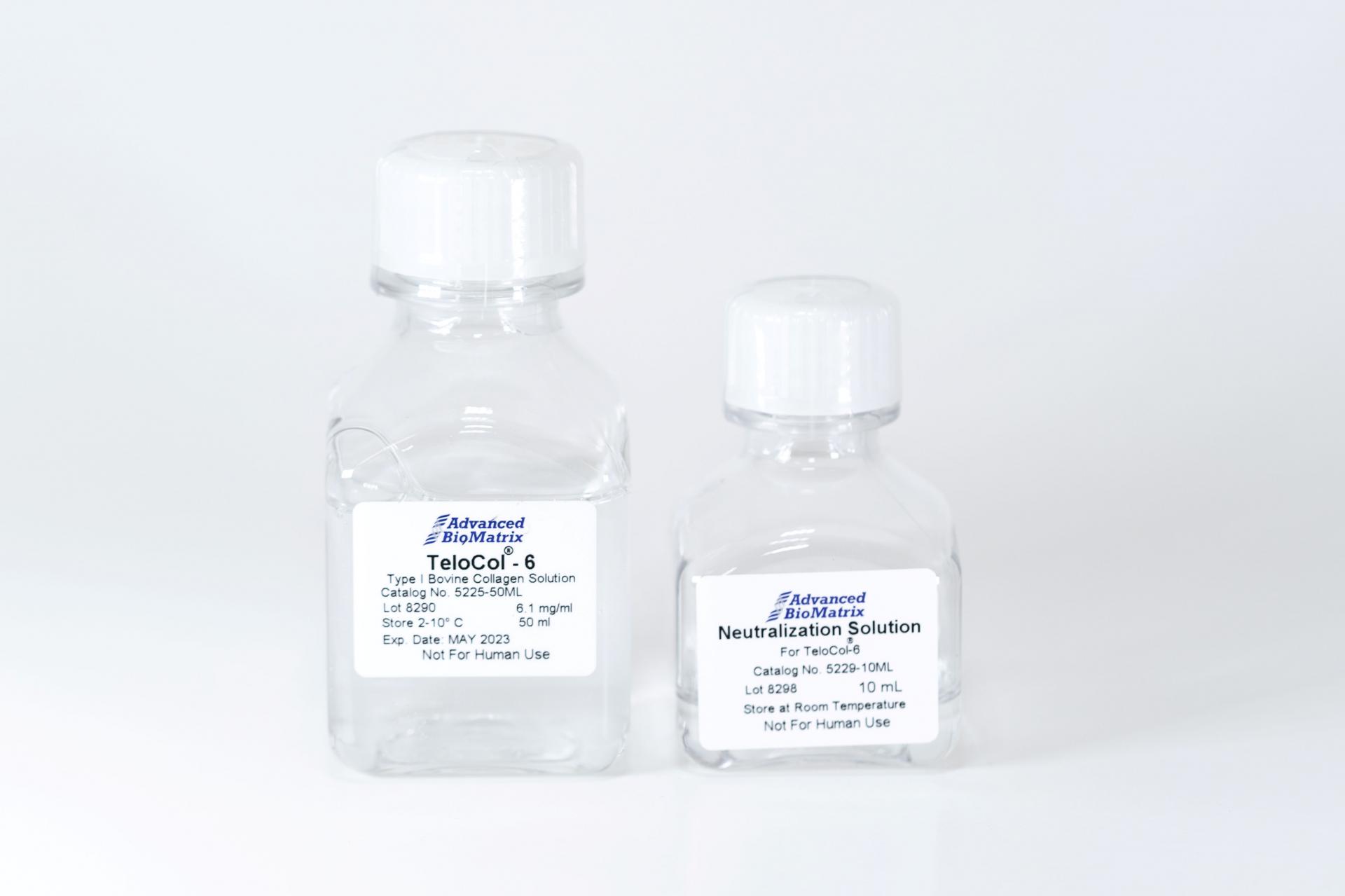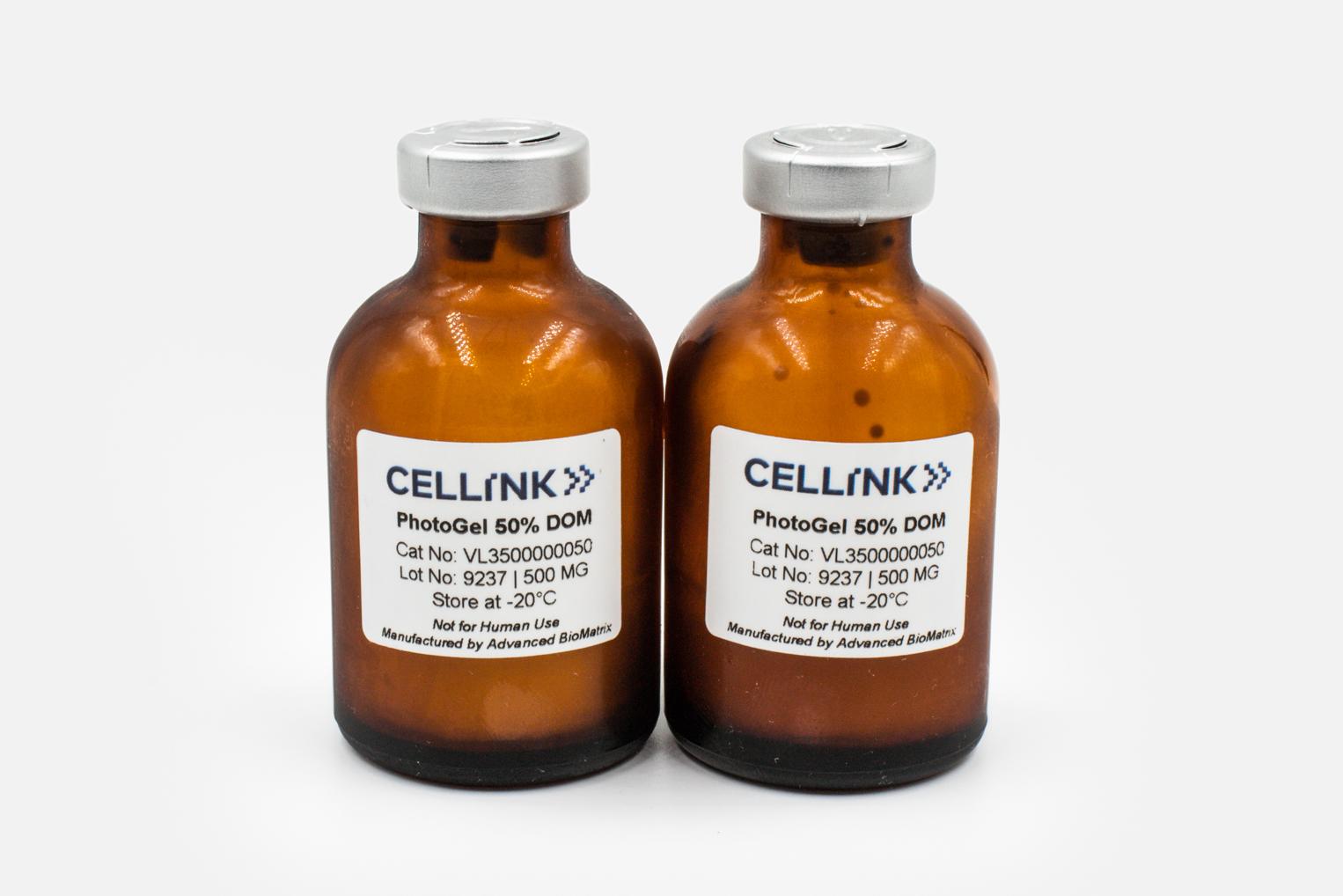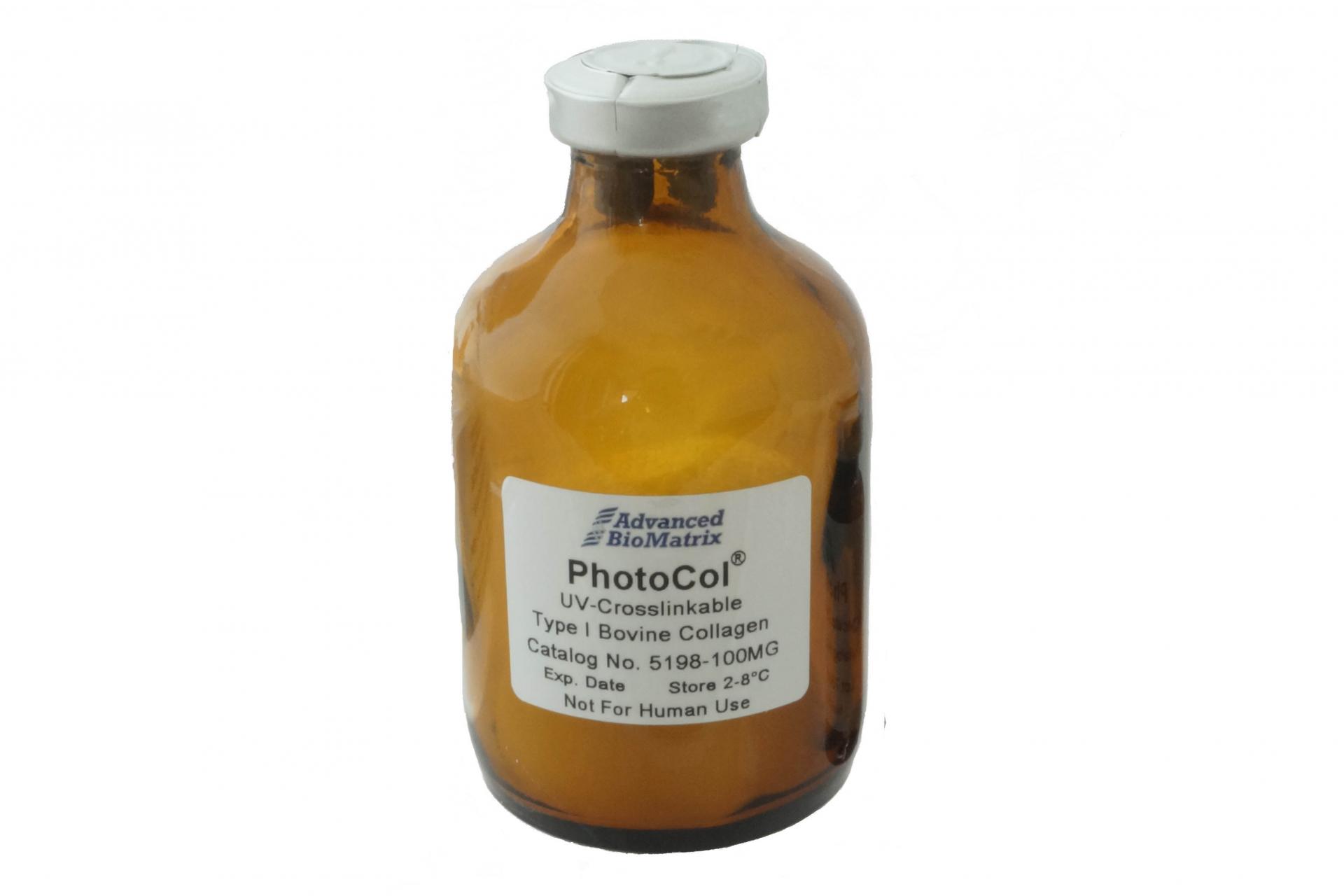-
Collagen
-
Type I - Atelocollagen
- PureCol® Solution, 3 mg/ml (bovine) #5005
- Nutragen® Solution, 6 mg/ml (bovine) #5010
- FibriCol® Solution, 10 mg/ml (bovine) #5133
- PureCol® EZ Gel, Solution, 5 mg/ml (bovine) #5074
- PureCol® Lyophilized, 15 mg (bovine) #5006
- VitroCol® Solution, 3 mg/ml (human) #5007
- VitroCol® Lyophilized, 15 mg (human) #5008
-
Type I - Telocollagen
- TeloCol®-3 Solution, 3 mg/ml (bovine) #5026
- TeloCol®-6 Solution, 6 mg/ml (bovine) #5225
- TeloCol®-10 Solution, 10 mg/ml (bovine) #5226
- RatCol™ for 2D and 3D, Solution, 4 mg/ml (rat) #5153
- RatCol™ High Concentration, Solution, 10 mg/ml (rat)
- RatCol™ lyophilized, 100 mg (rat)
- RatCol™ for Coatings, Solution, 4 mg/ml (rat) #5056
- Type I - Insoluble Collagen
- Type I - Bioinks
- Type II Collagen
- Type III Collagen
- Type IV Collagen
- Collagen Standard
-
PureCol® Collagen Coated Plates
- Collagen Coated T-25 Flasks #5029
- Collagen Coated 6-well Plates #5073
- Collagen Coated 12-well Plates #5439
- Collagen Coated 24-well Plates #5440
- Collagen Coated 48-well Plates #5181
- Collagen Coated 96-well Plates #5072
- Collagen Coated 384-well Plates #5380-5EA
- Collagen Coated 100 x 20 mm Dishes #5028
- MatTek Glass-Bottom Dishes
- MatTek Multi-Well Plates
- Collagen Scaffolds
- Collagen Hybridizing Peptides
-
Type I - Atelocollagen
- Tunable Stiffness
- CytoSoft™ Rigidity Plates
-
Bioprinting
- Support Slurry for FRESH Bioprinting
-
Bioinks for Extrusion Bioprinting
- Lifeink® 200 Collagen Bioink (35 mg/ml) #5278
- Lifeink® 220 Collagen Bioink (70 mg/ml) #5343
- Lifeink® 240 Acidic Collagen Bioink (35 mg/ml) #5267
- Lifeink® 260 Acidic Collagen Bioink (70 mg/ml) #5358
- GelMA Bioink
- GelMA A Bioink
- GelMA C Bioink
- Pluronic F-127 40% Sterile Solution
- GelMA 20% Sterile Solution
- Alginate 5% Sterile Solution
- Photoinitiators
- Bioinks for BIONOVA X
- Bioinks for Lumen X
- DLP Printing Consumables
-
Create Your Own Bioinks
- PhotoCol® Methacrylated Collagen
- PhotoGel® Methacrylated Gelatin 95% DS
- PhotoGel® Methacrylated Gelatin 50% DS
- PhotoHA®-Stiff Methacrylated Hyaluronic Acid
- PhotoHA®-Soft Methacrylated Hyaluronic Acid
- PhotoAlginate® Methacrylated Alginate
- PhotoDextran® Methacrylated Dextran
- PEGDA (Various Molecular Weights)
- Silk Fibroin, Solution
- PhotoSericin® Methacrylated Sericin
- Bioprinters
-
3D Hydrogels
- Thermoreversible Hydrogel
- Silk Fibroin
-
Type I Collagen for 3D Hydrogels
- PureCol® Solution, 3 mg/ml (bovine) #5005
- Nutragen® Solution, 6 mg/ml (bovine) #5010
- FibriCol® Solution, 10 mg/ml (bovine) #5133
- PureCol® EZ Gel, Solution, 5 mg/ml (bovine) #5074
- VitroCol® Solution, 3 mg/ml (human) #5007
- TeloCol®-3 Solution, 3 mg/ml (bovine) #5026
- TeloCol®-6 Solution, 6 mg/ml (bovine) #5225
- TeloCol®-10 Solution, 10 mg/ml (bovine) #5226
- RatCol® for 3D gels, Solution, 4 mg/ml (rat) #5153
- HyStem® Thiolated Hyaluronic Acid
- Methacrylated Collagen
- Methacrylated Gelatin
- Methacrylated Hyaluronic Acid
- Diacrylates
- Collagen Sponges
- Methacrylated Polysaccharides
- Spheroids and Organoids
- Extracellular Matrices
- HyStem / Hyaluronic Acid
-
Adhesion Peptides / Proteins
-
Recombinant Adhesion Proteins
- CD2, 0.5 mg/ml #5086
- CDH3, 0.5 mg/ml #5124
- CDH13, 0.5 mg/ml #5125
- CD14, 0.5 mg/ml #5089
- CDH18, 0.5 mg/ml #5090
- CD40, 0.5 mg/ml #5093
- CD86, 0.5 mg/ml #5096
- CD164, 0.5 mg/ml #5100
- CD270, 0.5 mg/ml #5127
- CD274, 0.5 mg/ml #5126
- CD276, 0.5 mg/ml #5123
- E-Cadherin (CD324), 0.5 mg/ml #5085
- ICAM2, 0.5 mg/ml #5107
- Adhesion Peptides
- Collagen Hybridizing Peptides
-
Recombinant Adhesion Proteins
- Reagents
- Assays
PhotoGel® ~95% DOM
Methacrylated Gelatin (GelMA)
Catalog #5208, #5215, #5272, #5273
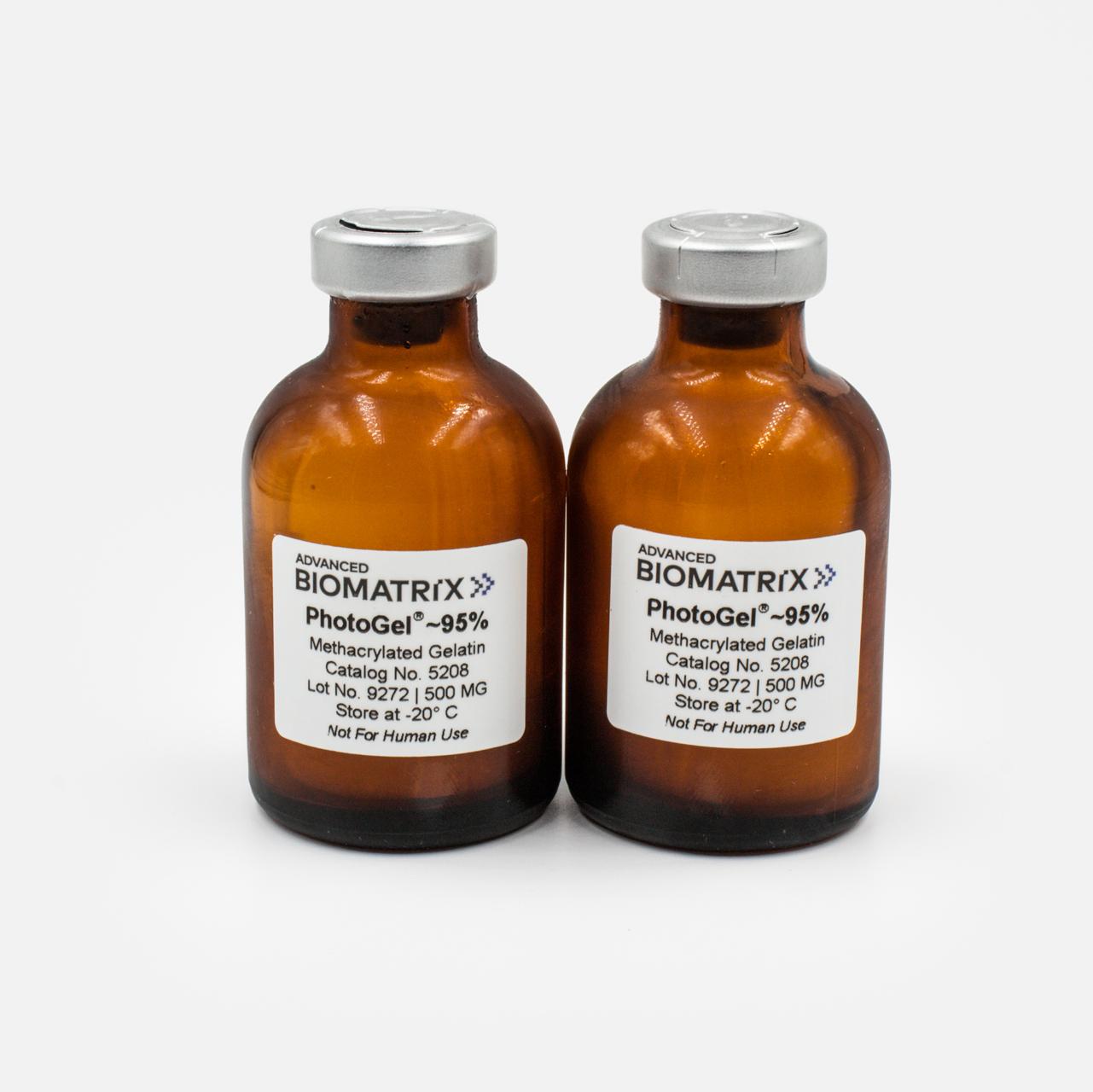
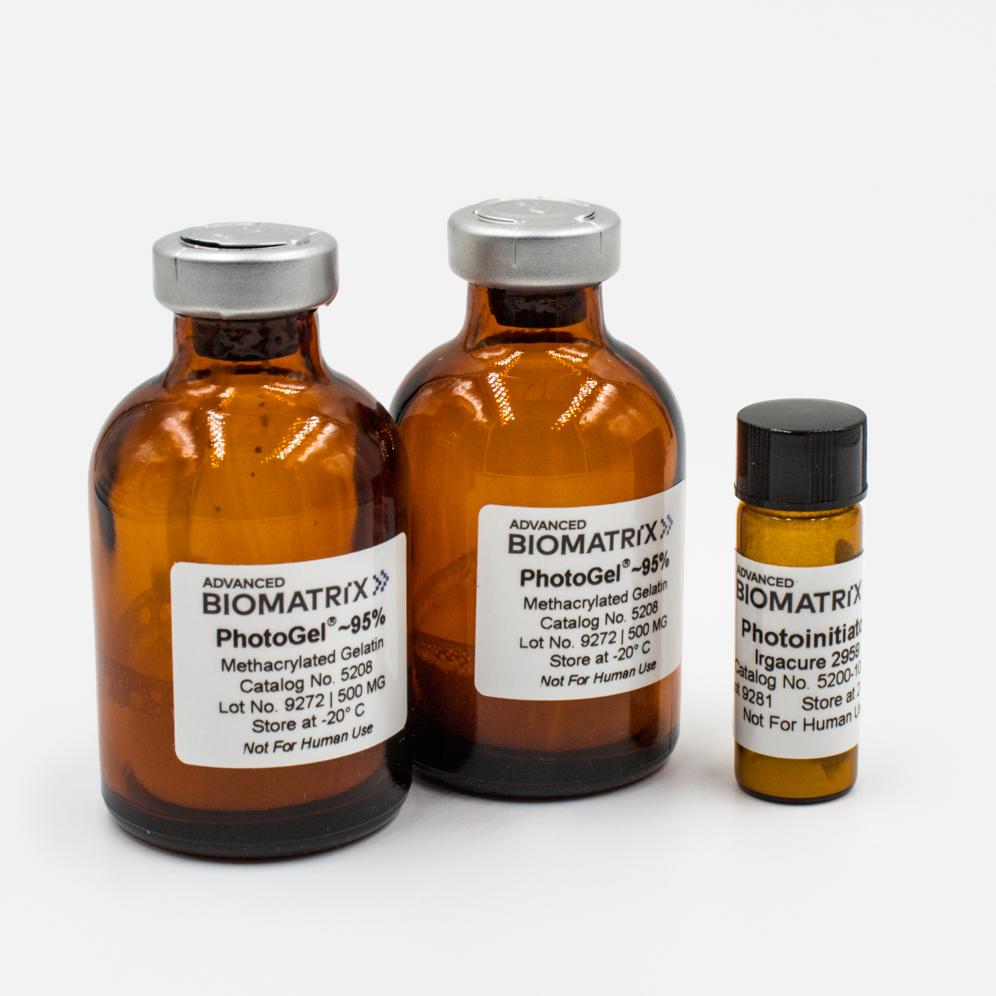


PhotoGel® ~95% DOM
Methacrylated Gelatin (GelMA)
Catalog #5208, #5215, #5272, #5273
This PhotoGel® is a lyophilized, sterile, high degree of methacrylation (~95%) methacrylated gelatin. PhotoGel® provides 3D hydrogels with the unique attributes to be prepared at various concentrations and photocrosslinked (requires a photoinitiator) to provide various gel stiffness.
Product Description
Advanced BioMatrix offers PhotoGel®, a purified and lyophilized methacrylated gelatin (GelMA) for photocrosslinkable hydrogels. PhotoGel® provides 3D tunable gels with the unique attributes to be prepared at various concentrations and crosslinked to provide various gel stiffness.
The PhotoGel® consists of purified methacrylated porcine gelatin (1 gram). The gelatin is type A 300 bloom. The individual product only contains the methacrylated gelatin. The kits come with the selected photoinitiator (separate, as a powder).
| Item | Catalog Number | Photoinitiator Included |
| PhotoGel | #5208 | N/A |
| PhotoGel with Irgacure | #5215 | Irgacure (365nm) |
| PhotoGel with LAP | #5272 | LAP (405nm) |
| PhotoGel with Ruthenium | #5273 | Ruthenium (400-450nm) |
PhotoGel® is produced from methacrylated gelatin where the gelatin has been modified by reacting the free amines, primarily the ε-amines groups of the lysine residues as well as the a-amines groups on the N-termini. >75% of the total lysine residues of the gelatin molecule have been methacrylated. The photoinitiator consists of Irgacure 2959 to be formulated in methanol (methanol not included) which allows UV crosslinking of the collagen at 365 nm.
| Parameter, Testing, and Method | Methacrylated Gelatin #5208 |
| Sterilization Method | Filtration |
| Sterility - USP modified | No growth |
| Form | Lyophilized Powder |
| Package Size | 1 gram (2 x 500 mg) |
| Storage Temperature | -20°C |
| Shelf Life | Minimum of 6 months from date of receipt |
| Degree of Methacrylation | > 75% |
|
Source |
Type A, 300 Bloom, Porcine Gelatin |
|
Hydrogel Young's Modulus E (Pa) |
Characteristic |
Directions for Use
Download the full Directions for Use PDF (Irgacure)
Download the full Directions for Use PDF (LAP)
Download the full PDF version (Ruthenium)
NOTE: For LAP photoinitiator, the basic recommendations will result in a ~0.03% final LAP concentration. For some applications, such as DLP printing, the final LAP concentration should be increased to ~0.25-0.5% to accelerate and improve crosslinking.
Product Q & A
You can digest photocrosslinked methacrylated gelatin with Proteinase K or high temperatures, though these steps would likely kill cells in the process. The alternative is collagenase and trpysin, though higher concentrations may be required than standard protocols due to the photocrosslinked nature of the hydrogel.
The PhotoGel is a type A, 300 bloom gelatin from porcine and has a molecular weight distribution that averages between 50-100 kDa.
Product Applications
Read our Methacrylated Extracellular Matrices eBrochure Here
PhotoGel® Gelatin methacrylate can be used to form cross-linked hydrogels for tissue engineering[1] and 3D printing. The common forms of 3D printing using Lifeink® 300 include extrusion[2][3][4], inkjet[5] and photolithography[6]).
PhotoGel® has been used for endothelial cell morphogenesis,[7] cardiomyocytes,[8] epidermal tissue[9], injectable tissue constructs[10], bone differentiation[11], and cartilage regeneration[12].
Gelatin methacrylate has been explored in drug delivery applications in the form of microspheres[13] and hydrogels[14].
References:
- https://www.ncbi.nlm.nih.gov/pmc/articles/PMC2878615/
- https://www.ncbi.nlm.nih.gov/pmc/articles/PMC4040163/
- https://www.ncbi.nlm.nih.gov/pubmed/24112804
- https://www.ncbi.nlm.nih.gov/pubmed/20387987
- https://www.ncbi.nlm.nih.gov/pmc/articles/PMC5380738/
- https://www.ncbi.nlm.nih.gov/pubmed/28349897/
- https://www.ncbi.nlm.nih.gov/pmc/articles/PMC3643201/
- https://www.ncbi.nlm.nih.gov/pmc/articles/PMC4551408/
- https://www.ncbi.nlm.nih.gov/pmc/articles/PMC4608855/
- http://pubs.acs.org/doi/abs/10.1021/bm401533y
- https://www.ncbi.nlm.nih.gov/pmc/articles/PMC4252258/
- https://www.ncbi.nlm.nih.gov/pubmed/24590160
- https://www.ncbi.nlm.nih.gov/pmc/articles/PMC4293288/
- http://www.ijpsonline.com/articles/preparation-and-characterization-of-gelatinpolymethacrylic-acid-interpenetrating-polymeric-network-hydrogels-as-a-phsensitive-deli.html
Product References
References for PhotoGel®:
Rothrauff, Benjamin B., et al. "Efficacy of thermoresponsive, photocrosslinkable hydrogels derived from decellularized tendon and cartilage extracellular matrix for cartilage tissue engineering." Journal of tissue engineering and regenerative medicine 12.1 (2018): e159-e170.
Rothrauff, Benjamin B., et al. "Anatomical region-dependent enhancement of 3-dimensional chondrogenic differentiation of human mesenchymal stem cells by soluble meniscus extracellular matrix." Acta biomaterialia 49 (2017): 140-151.
Rothrauff, Benjamin B., Guang Yang, and Rocky S. Tuan. "Tissue-specific bioactivity of soluble tendon-derived and cartilage-derived extracellular matrices on adult mesenchymal stem cells." Stem cell research & therapy 8.1 (2017): 133.
Bridge, Jack Christopher, et al. "Electrospun gelatin-based scaffolds as a novel 3D platform to study the function of contractile smooth muscle cells in vitro." Biomedical Physics & Engineering Express 4.4 (2018): 045039.
Capella-Monsonís, Héctor, et al. "Scaffolds for tendon tissue engineering." Handbook of Tissue Engineering Scaffolds: Volume One. Woodhead Publishing, 2019. 259-298.
Product Certificate of Analysis
No result for .
Safety and Documentation
Product Disclaimer
This product is for R&D use only and is not intended for human or other uses. Please consult the Material Safety Data Sheet for information regarding hazards and safe handling practices.
